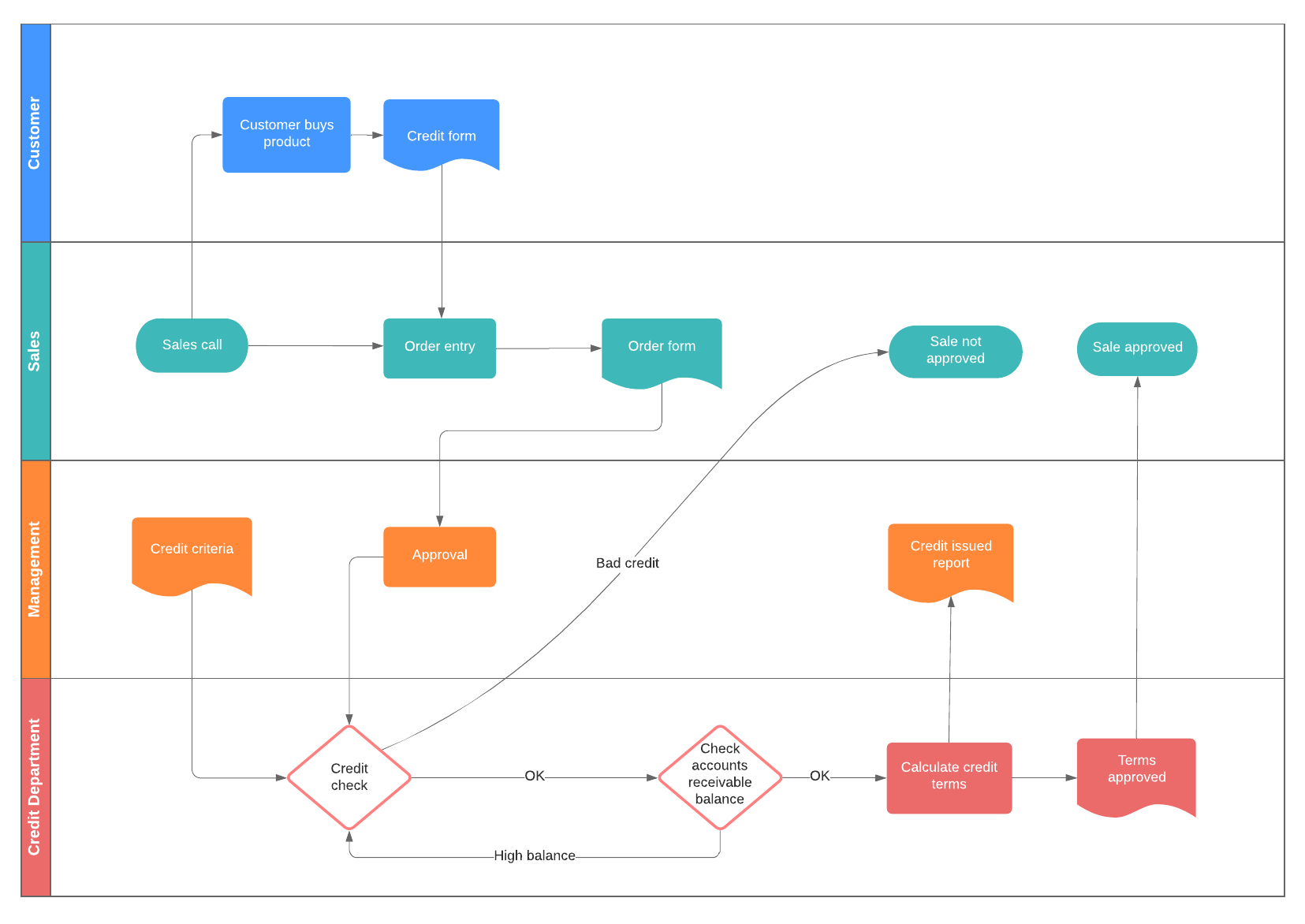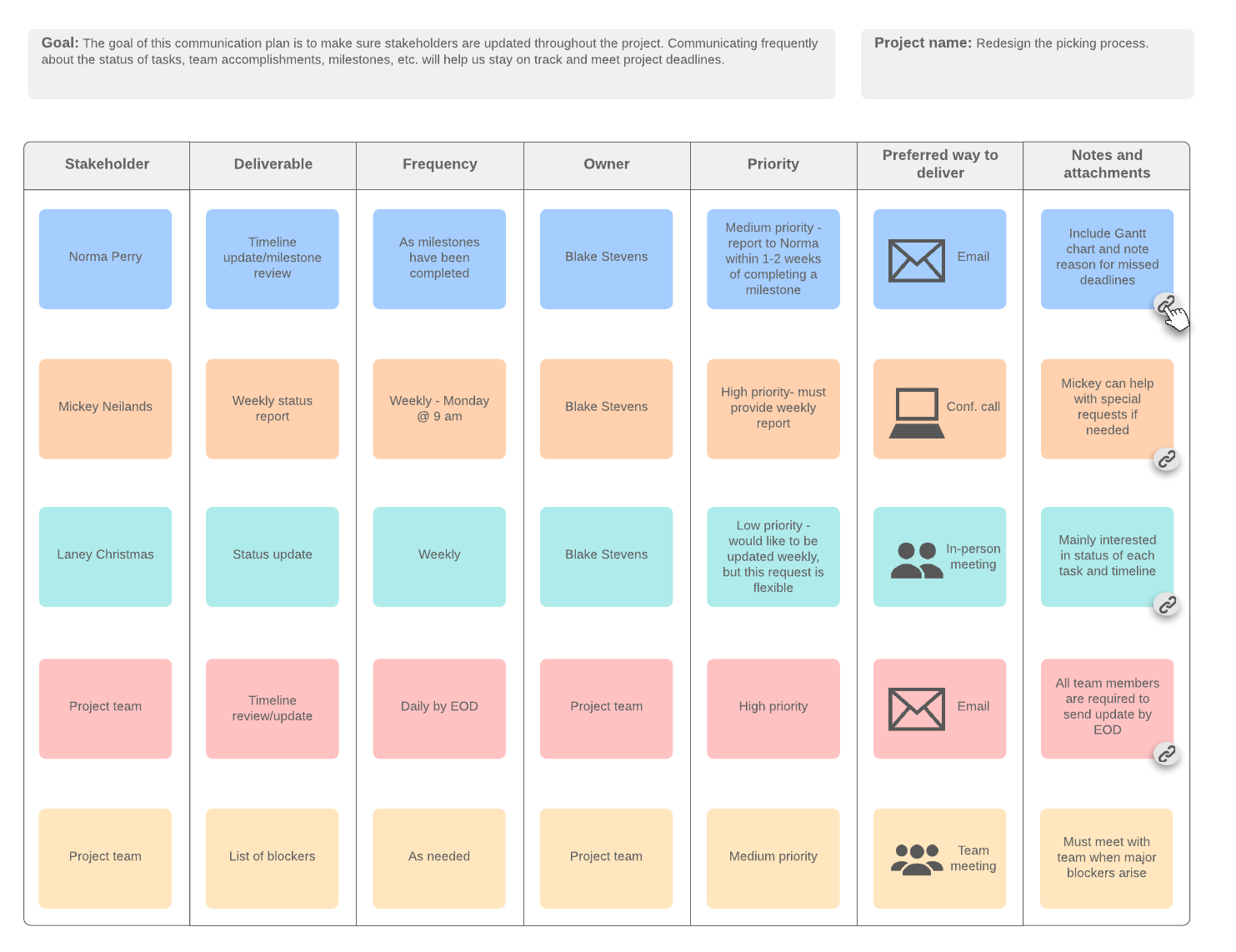
How BAs bridge the gap between executives and IT
Lucid Content
Reading time: about 6 min
Human translators are invaluable for helping two parties that speak different languages communicate with each other. They’re adept at navigating idioms and native nuances and they help facilitate efficient communication. Without translators, some of the most delicate and important meetings in the history of the world could not have happened. And, inversely, mistranslation and miscommunication have caused some serious issues.
Business analysts can act as human translators to help bridge the divide between the more technically-minded IT and the big picture-minded executives in an enterprise. Here, we’ll provide a clearer description of the role of BAs in businesses and of how BAs can function as key communication facilitators, taking the work they do with IT teams and compiling it into data-driven communications that will help achieve executive buy-in.
Why working in silos is a problem
In linguistics, the longer a culture is separated by distance, the more disparate its language becomes. Consider British English and American English, for example. Though we both speak the same core language, thanks to a couple hundred years of separation, our languages have evolved to have different slang, accents, and spellings.
A similar concept applies to silos within your enterprise: the more separated the silos, the more specialized the language. In IT, for example, the term “bandwidth” applies to the rate of data transfer, but if you hear the same term from an executive, they’re talking about their mental free space or time. Silos keep knowledge, language, and processes separated by departments and that can lead to unclear goals and general chaos.
A business analyst works as an interpreter to bridge a language and requirements gap between departments, making sure that all teams are working as a cohesive unit.
The importance of cross-functional communications and collaboration
Imagine how incredible the world would be if we all understood each other’s languages. It would essentially be the end of miscommunication. By opening up communication across departments and silos, you’re essentially opening up a world of possibilities. Now, information can flow freely, strategies can align, and valuable lessons can be shared with everyone.
What really happens when you harness the power of cross-functional communication and collaboration can be summarized in one word: innovation.
Further, this innovation adds business value and keeps the organization moving toward its ultimate goal. Healthy collaboration ultimately means a healthier business.
What does a business analyst do?
In short, a business analyst approaches a business objective armed with data and research to make an informed decision. An organization engages with a business analyst to decrease the risk involved with implementing any change.
For instance, if your enterprise wants to move from on-prem servers to the cloud, it would be smart to enlist the help of a business analyst. The BA would likely brainstorm the requirements for a cloud services provider and document processes to define and refine the issues the problems cloud hosting would solve. In addition, they could work with all stakeholders and project managers to guide the migration to the cloud and gain a complete understanding of every facet of the business that would be impacted by the migration of moving to remote hosting.
How BAs facilitate cross-functional communication
If the above description leaves some fuzziness about how exactly BAs bridge the gap between executives and IT, we’ll clarify. Here’s how BAs facilitate cross-functional communication.
1. Create a line of communication between IT and execs
Many managers confuse strong leadership with strong oversight. And when executives are too involved, IT can easily start to resent them for micromanaging and hindering progress. This is the beauty of a business analyst: they implement processes that improve transparency so both departments feel involved and informed, no micromanaging required.
For instance, instead of daily emails from executives to IT asking about the status of projects, a business analyst can suggest a weekly standup or a daily SCRUM that involves IT and executives.
2. “Translate” between groups.
Makers have a different language from managers. That can lead to some real frustrations when makers are trying to describe the roadblocks they’re encountering and managers can’t understand what the hold up is. Since they “speak” IT and business languages, this is where a BA can help.
Consider GDPR implementation. Meeting GDPR requirements can be a tricky task for IT, but executives may not understand why it’s tricky and why they should devote resources to a GDPR management system. A business analyst can map out the compliance process, incorporate these diagrams into a presentation, and explain the importance of GDPR compliance and why it’s difficult to implement to executives.

3. Help develop mutually beneficial goals
Executives can often be guilty of creating goals that are beyond the reasonable expectations of IT. If, for instance, management wants an entirely new website launched in under a week, a business analyst can conduct a cost-benefit analysis of management’s proposal as well as alternative ideas and suggest a more rational, data-driven time table that would yield a beautiful, responsive website without destroying the personal lives of your IT department.

4. Build trust with, and between, both groups
Executives need to let IT do the jobs they were hired to do. But that level of trust doesn’t come easily. By setting goals for IT, guiding them to meet those goals, and then presenting their success to management, business analysts can help executives develop trust in their IT team to do their job. With this kind of trust, executives are also much more likely to take IT’s suggestions and that can be invaluable.

5. Provide data-driven insights and suggestions
The great thing about data is that it’s normally about as objective as it gets. This eliminates bias while allowing everyone involved to make informed decisions that can mitigate risk as much as possible. Sometimes data will allow teams to arrive at conclusions they wouldn’t ordinarily see, and that can help the business gain a competitive edge, function better internally, and build a better working dynamic.
6. Create useful documentation
No business is static. By creating meaningful documentation, a business analyst can help:
- Standardize processes
- Reduce training time and costs
- Conduct better post-mortems
- Enhance organization
- Optimize processes
- Identify stakeholders
- Support complex, long-term projects
- Measure success
Documentation is essentially a record of a project’s history, but it’s also a powerful form of living data that can inspire and provide clues for better problem solving. Documentation ensures moments of brilliance aren’t lost in the minutiae. It can also act as an important source of truth when decisions were forgotten.
7. Establish long-lasting communication processes and systems
Set communication processes and systems can definitely increase efficiency. But possibly the best attribute of great communication processes is that they often relieve the burden of blame from humans and place it on the process. If something is going repeatedly wrong, it could be that your training process wasn’t thorough enough—it doesn’t mean that an employee is failing to perform.
By establishing communications processes, you can also ensure that no one in IT feels overwhelmed by endless emails while also easing management’s anxiety that work is being completed and goals are being met.
One way to increase transparency and communication between teams may be to provide a weekly summary of IT’s most important successes and their next week’s goals. This is a great time to give shoutouts to individual team members to boost morale and keep them in mind for recognition and career advancement.
While business analysts are often seen as numbers people, there’s real value in using them to bridge the gap between IT and executives to provide greater satisfaction and break down work silos.

Find out what a BA communication plan is, why it’s important, and best practices for creating your own BA communication strategy?
Learn moreAbout Lucidchart
Lucidchart, a cloud-based intelligent diagramming application, is a core component of Lucid Software's Visual Collaboration Suite. This intuitive, cloud-based solution empowers teams to collaborate in real-time to build flowcharts, mockups, UML diagrams, customer journey maps, and more. Lucidchart propels teams forward to build the future faster. Lucid is proud to serve top businesses around the world, including customers such as Google, GE, and NBC Universal, and 99% of the Fortune 500. Lucid partners with industry leaders, including Google, Atlassian, and Microsoft. Since its founding, Lucid has received numerous awards for its products, business, and workplace culture. For more information, visit lucidchart.com.
